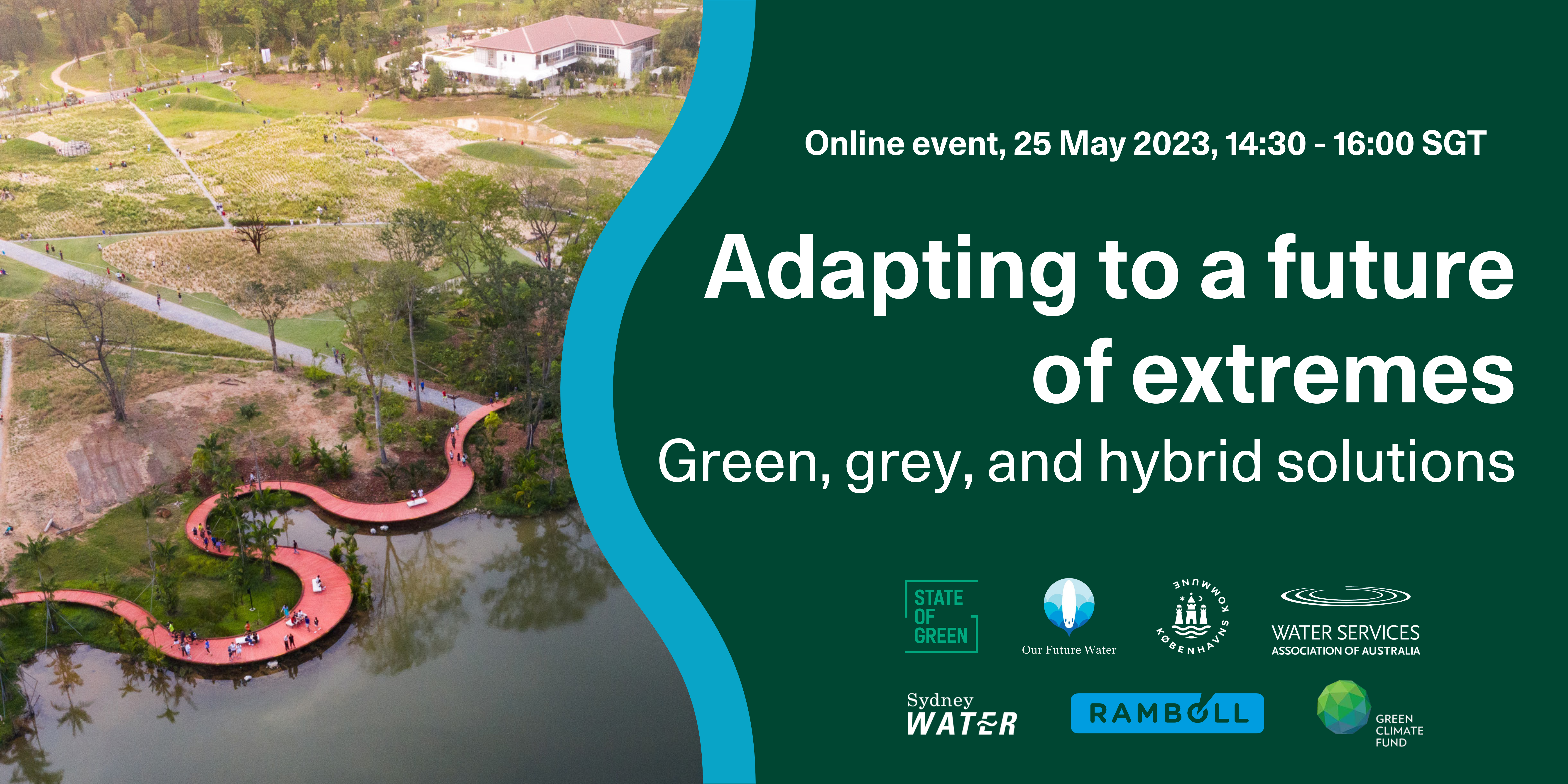Adapting to a future of extremes: Green, grey and hybrid solutions

The effects of climate change are felt far and wide, particularly for the urban environment, the either too much or too little water dichotomy poses great challenges to costly infrastructure and livability. This online session will discuss the adaptation efforts and experiences from Europe and the Asia Pacific and highlight some of the innovative approaches on how to adapt to a future of water extremes.
Join leading climate adaptation and resiliency experts as Our Future Water, alongside a great list of panellists and Denmark's State of Green, invite you to participate in the online event “Adapting to a future of extremes: Green, grey and hybrid solutions”.
Cities around the world increasingly face the adverse effects of climate change, including rising sea levels, climbing temperatures, longer periods of drought and stronger storms. When combining these phenomena with the challenges of increasing urbanisation and the fact that most cities have extensive areas of impermeable surfaces, the need for rethinking urban water management is clear.
In 2022, Europe received the hottest temperatures on record and saw some of the most damaging floods in Italy particularly, the year before that Germany was the country most severely hit. This leaves one thinking, which country will be the hardest hit in 2023? As we look further into 2023, and the possibility of ever-increasing numbers of climate-induced urban disasters, we need to keep conversations going on what innovative solutions and understandings of the climate challenge are currently on offer.
Climate change adaptation seeks to lower the risks posed by the consequences of climate change, including flooding that arises from extreme rain events. Over the next decade, countries around the world from Europe to Asia Pacific will need to invest heavily in adapting their cities to climate changes and adapting to future water scarcity. A key aim is to combine climate change adaptation with urban development and gain greater value. Instead of expanding the underground sewage system, municipalities and utilities are collaborating on making dual-purpose solutions.
In this respect, Nature Based Solutions (NBS) can play a key role in urban water management, adapting to too much and too little water whilst building cities that are attractive for people to live, work and play in.
Online session opens
8.30 CEST
14.30 SGT
Green Insights begins: Welcome and introduction
8.35 CEST
14.35 SGT
Setting the scene: Adapting to a future of extremes - Green, grey and hybrid solutions
8.50 CEST
14.50 SGT
Pritha Hariram, Climate Resilient Infrastructure Development & Finance Specialist, Ramboll
Case presentation: Copenhagen's Cloudburst Management Plan
9.00 CEST
15.00 SGT
Lykke Leonardsen, Program director for Resilient and Sustainable City Solutions, City of Copenhagen
Case presentation: Maintaining liveability in Sydney
9.10 CEST
15.10 SGT
Greg Ingleton, Segment Manager – Circular Economy, Western Sydney Development, Sydney Water
Panel discussion
9.40 CEST
15.40 SGT
- Panel Moderator, Robert C. Brears Founder, Our Future Water
- Jason Mingo, Manager of Liveable Communities, Water Services Association of Australia
- Dr Amgad Elmahdi, Water Sector Lead, UNFCCC’s Green Climate Fund
- Pritha Hariram, Climate Resilient Infrastructure Development & Finance Specialist, Ramboll
- Lykke Leonardsen, Program director for Resilient and Sustainable City Solutions, City of Copenhagen
- Greg Ingleton, Segment Manager – Circular Economy, Western Sydney Development, Sydney Water
Q&A
9.50 CEST
15.50 SGT
Sum-up and closing remarks
10.00 CEST
16.00 SGT
End of event